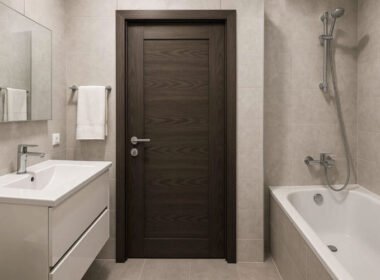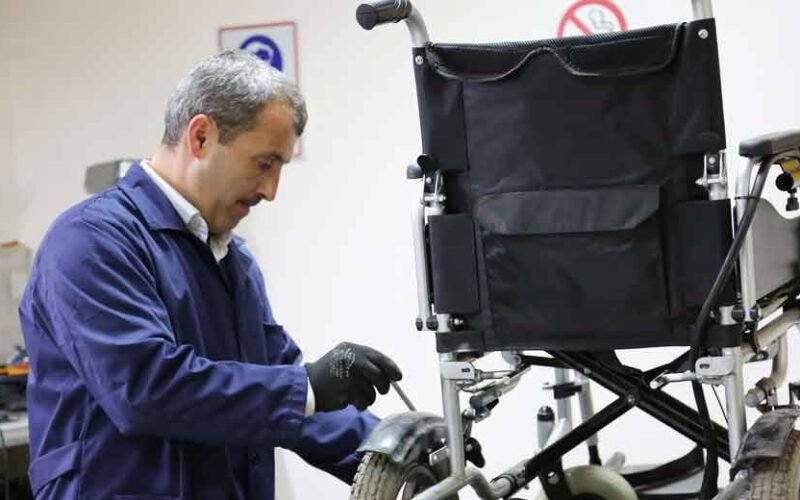A folding wheelchair is more than just a piece of equipment — it’s a vital tool for independence and mobility. Like any mechanical device, regular maintenance is essential to keep it functioning smoothly and safely. Whether you use your folding wheelchair every day or only occasionally, following a consistent care routine can extend its lifespan, enhance comfort, and reduce the need for costly repairs.
In this article, we’ll walk you through practical folding wheelchair maintenance tips tailored for Australian users — from cleaning and lubrication to safety checks and storage advice.
Why Regular Maintenance Matters
Folding wheelchairs are designed to be lightweight, portable, and easy to store. But regular folding, unfolding, and exposure to the elements can cause wear and tear on joints, wheels, and upholstery. Without proper maintenance, small issues like loose bolts or underinflated tyres can quickly develop into safety hazards or functional problems.
Benefits of regular wheelchair maintenance include:
- Improved safety and stability
- Longer equipment lifespan
- Reduced risk of breakdowns
- Greater user comfort
- Lower long-term maintenance costs
- Clean Your Wheelchair Regularly
Dirt, dust, and debris can collect on the frame, bearings, wheels, and upholstery — especially if you use your wheelchair outdoors.
How to clean your wheelchair:
- Wipe the frame with a damp cloth and mild detergent.
- Use a soft brush to remove dirt from hard-to-reach areas, like joints and folding mechanisms.
- Clean the upholstery using warm water and a non-abrasive cleaner. Avoid soaking fabric, especially if it’s not waterproof.
- Dry thoroughly with a clean towel or allow it to air dry before folding or storing.
Tip: Avoid high-pressure hoses, which may force water into sensitive parts and lead to rust.
- Inspect Tyres and Wheels
Wheels are the most used and most stressed part of any wheelchair. Regular inspection is essential to ensure smooth, safe rolling.
For solid tyres:
- Check for cracks, flat spots or excessive wear.
- Make sure tyres haven’t worn down to the point of reduced grip or traction.
For pneumatic (air-filled) tyres:
- Check the air pressure weekly, and inflate to the manufacturer’s recommended PSI.
- Inspect for punctures or leaks.
Check the wheels:
- Ensure the rear wheels spin freely and are not wobbly.
- Inspect casters (front wheels) for debris, cracks, or looseness.
- Remove hair or thread that can get caught around the axles.
Tip: A squeaky wheel could indicate the need for cleaning, lubrication, or bearing replacement.
- Lubricate Moving Parts
Proper lubrication keeps folding mechanisms, axles, and joints operating smoothly and quietly.
Areas to lubricate include:
- Folding joints and hinges
- Axles and bearings
- Brake mechanisms
Use a light machine oil or silicone-based lubricant. Avoid grease, which can attract dirt and grime. Always wipe away excess oil to prevent build-up.
Caution: Never lubricate the braking surface of the wheels, as this may compromise safety.
- Check the Brakes
Brakes are crucial for safety, especially on sloped or uneven surfaces. Inspect them regularly and ensure they engage and disengage correctly.
Brake inspection tips:
- Make sure brake levers are tight and not slipping.
- Check that tyres are not worn or too low in pressure, as this affects braking efficiency.
- If your brakes are rubbing, squeaking, or not holding securely, adjustments may be needed.
Tip: If you’re unsure how to adjust wheelchair brakes, ask a technician or refer to the user manual.
- Tighten Loose Bolts and Screws
Daily use and folding can cause nuts and bolts to loosen over time. It’s a good idea to go over your wheelchair once a month with basic tools.
Where to check:
- Frame joints and hinges
- Armrests and footrests
- Wheel axles and brackets
- Brake components
Use appropriate tools and avoid over-tightening, which can strip threads or damage components. If a screw continually comes loose, consider using a thread-locking compound.
- Inspect the Upholstery
Seat and backrest fabric can wear out, especially in high-use areas. Damaged upholstery not only affects comfort but can also cause pressure sores or skin irritation.
Upholstery care tips:
- Look for fraying, tears, or sagging in the seat and backrest.
- Ensure cushions and padding are clean and dry.
- Replace any worn or compressed cushions.
Tip: For added protection, consider using removable covers or pressure-relief cushions, especially if you spend long hours in your wheelchair.
- Fold and Store It Correctly
Improper folding or careless storage can cause damage to the frame or fabric. Always follow the manufacturer’s guidelines when folding your wheelchair.
Storage advice:
- Store in a dry, indoor environment — moisture causes rust and mildew.
- Keep the wheelchair off the ground if possible to avoid dust build-up or tyre flat spots.
- Avoid placing heavy items on top of the folded wheelchair.
Tip: If you travel often, invest in a wheelchair travel bag or case to protect it in transit.
- Schedule Professional Servicing
While DIY maintenance goes a long way, an annual professional service ensures your wheelchair is in top condition. A qualified technician can:
- Check wheel alignment
- Replace worn bearings or tyres
- Adjust folding mechanisms
- Service brakes and controls
- Ensure overall safety and compliance with Australian standards
Where to book: Mobility equipment suppliers and rehabilitation clinics often offer servicing. Some even provide mobile technicians who visit your home.
Signs Your Wheelchair Needs Attention
Don’t wait for a breakdown. Look out for early warning signs such as:
- Unusual noises or vibrations
- Difficulty folding or unfolding
- Wobbling wheels or caster flutter
- Reduced braking effectiveness
- Sudden loss of comfort or support
Addressing small issues early can prevent bigger (and costlier) problems down the track.
Final Thoughts
A folding wheelchair is an essential part of daily life for many Australians. With regular care and basic maintenance, you can extend the lifespan of your mobility aid, enhance safety, and enjoy a smoother ride — wherever life takes you.
Taking just a few minutes each week to clean, check and care for your wheelchair will help keep it in top condition for years to come.










